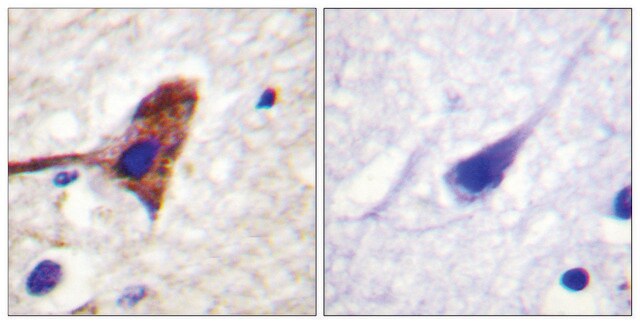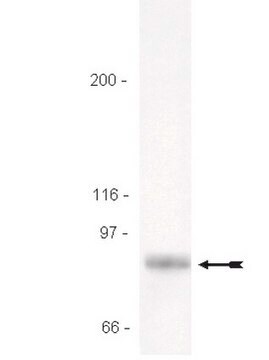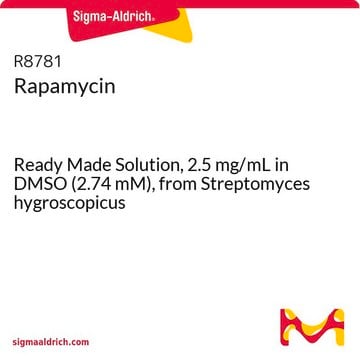T2949
Anti-mTOR antibody produced in rabbit
1.0-1.5 mg/mL, affinity isolated antibody, buffered aqueous solution
Sinonimo/i:
Anti-FKBP-12 rapamycin associated protein, Anti-FRAP, Anti-RAFT, Anti-SEP
Scegli un formato
541,00 €
Scegli un formato
About This Item
541,00 €
Prodotti consigliati
Origine biologica
rabbit
Coniugato
unconjugated
Forma dell’anticorpo
affinity isolated antibody
Tipo di anticorpo
primary antibodies
Clone
polyclonal
Stato
buffered aqueous solution
PM
antigen 289 kDa
Reattività contro le specie
rat, human, mouse
Concentrazione
1.0-1.5 mg/mL
tecniche
immunoprecipitation (IP): 1.0-1.5 μg using 300 μg RIPA extract of human transformed kidney HEK 293T cells
microarray: suitable
western blot: 1:2,000 using whole extracts of rat brain tissue
western blot: 1:500 using mouse brain tissue
Condizioni di spedizione
dry ice
Temperatura di conservazione
−20°C
modifica post-traduzionali bersaglio
unmodified
Informazioni sul gene
human ... FRAP1(2475)
mouse ... Frap1(56717)
rat ... Frap1(56718)
Descrizione generale
Specificità
Immunogeno
Applicazioni
Western Blotting (1 paper)
Stato fisico
Esclusione di responsabilità
Non trovi il prodotto giusto?
Prova il nostro Motore di ricerca dei prodotti.
Raccomandato
Codice della classe di stoccaggio
10 - Combustible liquids
Classe di pericolosità dell'acqua (WGK)
WGK 3
Punto d’infiammabilità (°F)
Not applicable
Punto d’infiammabilità (°C)
Not applicable
Scegli una delle versioni più recenti:
Possiedi già questo prodotto?
I documenti relativi ai prodotti acquistati recentemente sono disponibili nell’Archivio dei documenti.
I clienti hanno visto anche
Articoli
Cancer stem cell media, spheroid plates and cancer stem cell markers to culture and characterize CSC populations.
Filtri attivi
Il team dei nostri ricercatori vanta grande esperienza in tutte le aree della ricerca quali Life Science, scienza dei materiali, sintesi chimica, cromatografia, discipline analitiche, ecc..
Contatta l'Assistenza Tecnica.












